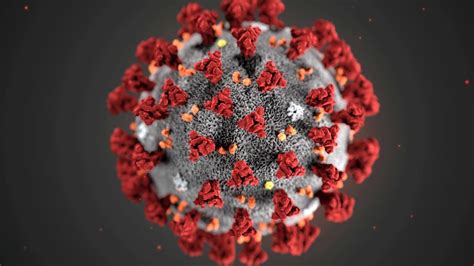
COVID-19 is something that you’ve likely never experienced before and it’s a great cause for concern. We don’t fully know how it will end and how much havoc it will cause before a vaccine is found.
In the U.S. alone, at least 54,000 people have contracted coronavirus. This figure only grows when you look worldwide and it will surely increase as time goes on.
If you aren’t yet sick, then you’ll surely want to know how you can avoid contracting the virus. Should you be sick, then you’ll also want to know this information so you can do your part to avoid spreading it.
This starts with understanding how coronavirus is transmitted, illustrating situations and actions for you to avoid. We’ll explain this below to help keep you safe during the COVID-19 pandemic.
Directly: Respiratory Droplets
A direct way of transmitting COVID-19 is through respiratory droplets. This novel form of coronavirus can travel between people by coughing.
If someone near you coughs into their elbow and slightly misses, a respiratory droplet may land on you. This will put you at risk for contracting COVID-19.
Another direct form of transmission is sneezing. Quite similar to coughing, sneezing causes respiratory droplets to exit the nose or the mouth, and sometimes, even both. They can travel to the air and land on someone nearby.
Since coughing and sneezing are two of the most direct ways that COVID-19, it’s incredibly important to wear face cover masks when you are in public. They help protect everyone around and ensure that no respiratory droplets transfer between people!
Indirectly: Infected Surfaces
You can indirectly contract coronavirus by touching an infected surface or object.
Coughing and sneezing are typically how surfaces become infected initially, which then leaves them compromised for anyone who comes into contact with it.
If someone coughs or sneezes in a public setting, their respiratory droplets might land on the environment around them. This becomes particularly challenging if someone coughs or sneezes into their hands.
When you use your hands as a shield, you are just extending the contamination process. Instead of directly infecting someone else, you’ll transfer droplets to your hands that will transmit to surfaces you touch.
From there, other people can be indirectly infected by touching these surfaces. This is why it’s so important to wash your hands often, whether you are sick or not.
Furthermore, make it a point to not touch your face without washing your hands first. You should always keep hand sanitizer in your pocket when you go out in case you can’t find a sink and soap.
Keep in mind that germs are everywhere, which means nothing is safe to touch during coronavirus.
Mixed: Aerosol Particles
A mixture of direct and indirect spreading is done through aerosol particles.
COVID-19 is typically transmitted through respiratory droplets, but a different mode of transport is done through aerosol transmission.
This is how the virus travels through the air. The smallest COVID-19 particles are known as aerosols, which are so lightweight and minuscule that they can suspend in the air. This allows them to travel on air currents and impact people at greater distances.
Since they travel along air currents, the coronavirus particles will go as far as the wind will take them.
Aerosol transmission shows that there is a greater risk of catching COVID-19 than you may realize because it shows that six feet may not be a large enough safety net to avoid getting coronavirus.
This is another reason to wear a mask even if you don’t feel like you’re going to get sick.
Close Contact Increases Risk
One last thing to keep in mind is that close contact increases your risk of getting sick. This is why it’s incredibly beneficial to abide by the rules of social distancing.
In most places, people are required to stand at least six feet apart. The main reason behind this is to limit the possibility of close contact.
The closer you are to other people, the more readily infectious respiratory droplets can land on you. An easy way of minimizing the likelihood of this happening is to leave plenty of space between you and others.
Taking things a step further, make sure that you never physically touch anyone. This will help reduce the risk of spreading the virus should it be on someone else’s hands or clothing.
Stay at least six feet away from others, but feel free to broaden that distance for your safety.
Closing Thoughts
COVID-19 is a special strain of coronavirus that can be transmitted in three different ways. It can travel directly, indirectly, or as a combination of both.
The virus travels directly by way of respiratory droplets that travel through your air passageways. Indirectly, it is spread through contact of infected surfaces. Mixed transmission is caused by aerosol particles.
Coronavirus is incredibly dangerous and there’s no reason to risk getting sick. Stay home if you can and keep your distance from other people! Wash your hands frequently and wear a mask to prevent spreading particles.